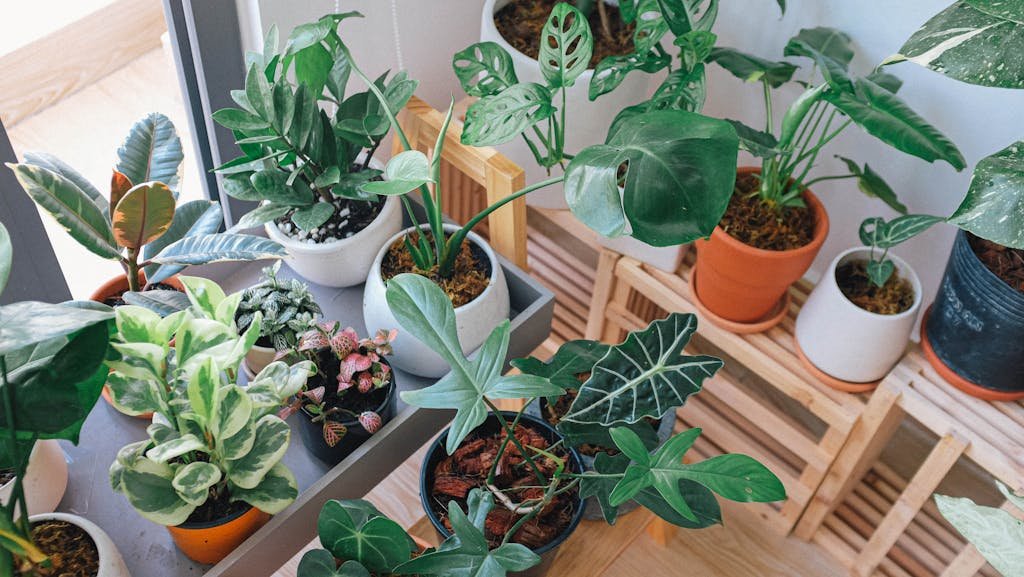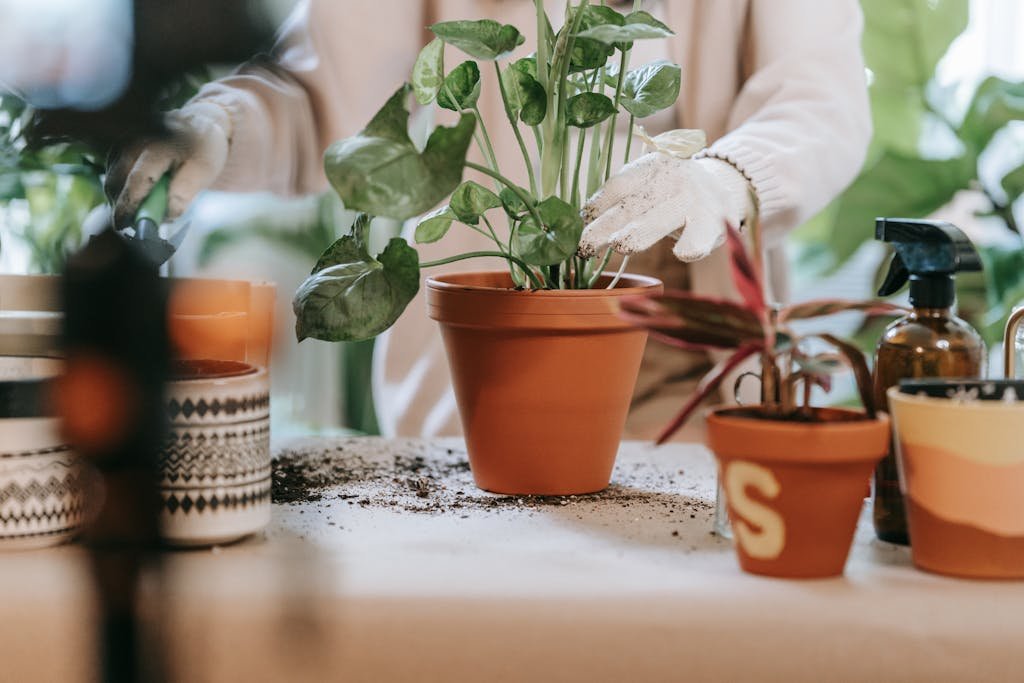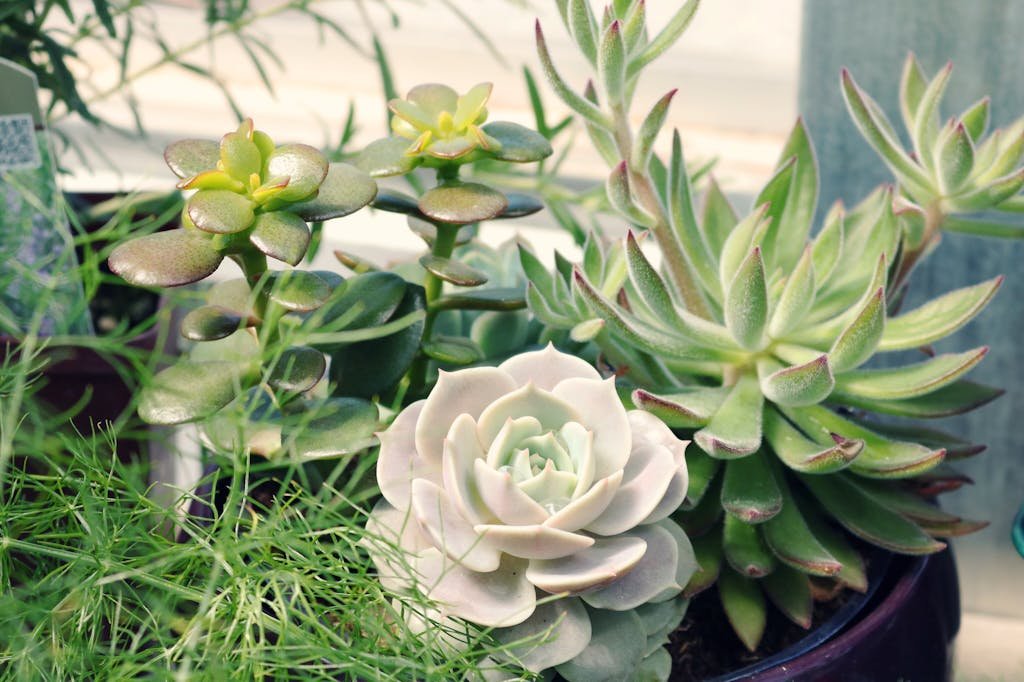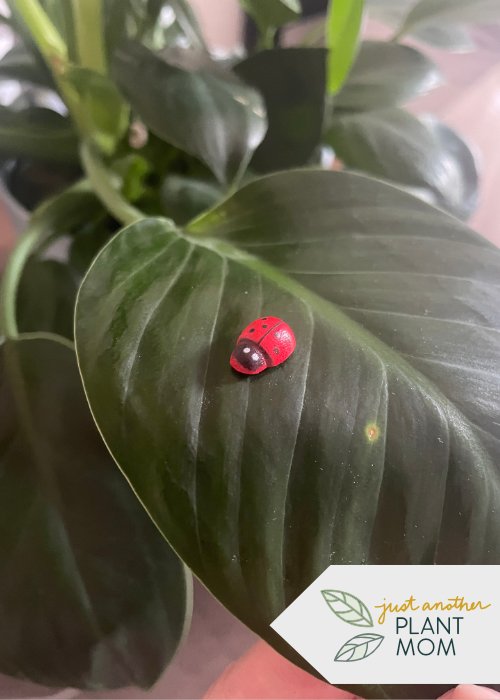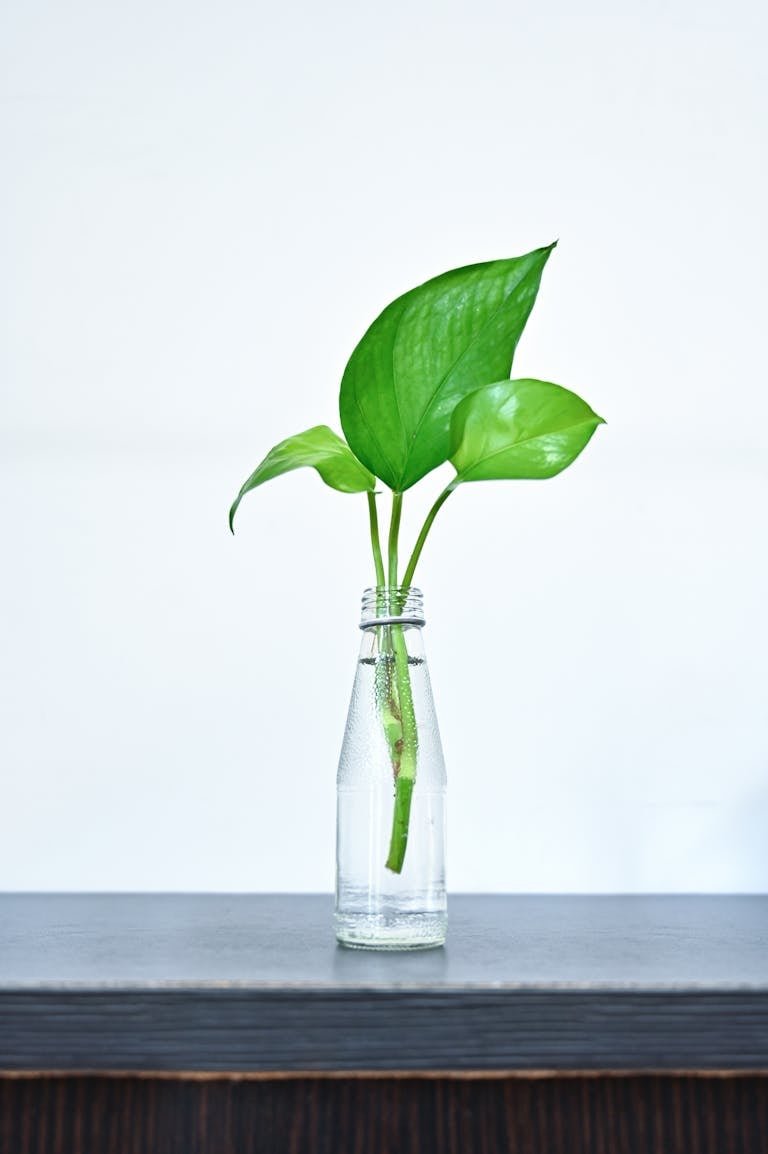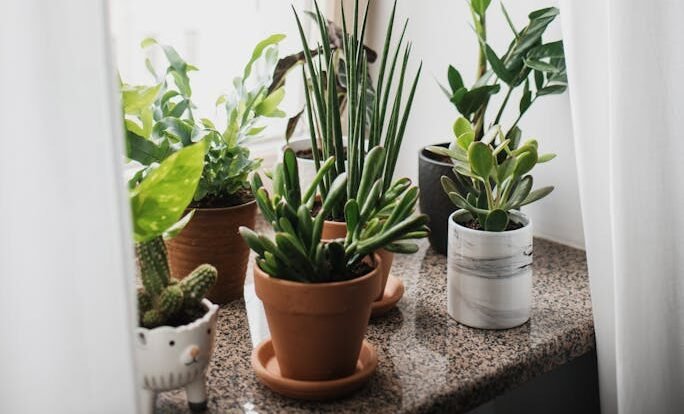The ultimate guide to watering your indoor plants
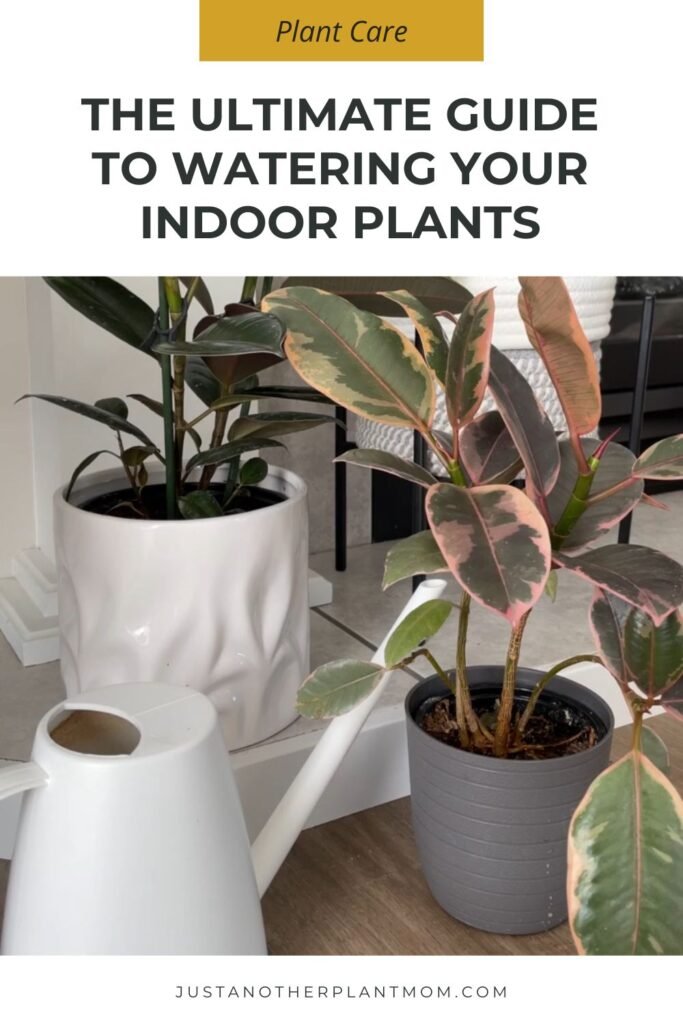
Is it just me or does watering your plants sometimes feel like a science experiment… Am I watering too much? Too little? Too frequent? Not frequent enough? How do I tell????
If you’ve ever felt this way, don’t worry! I’ve learned a few tips and tricks over the past few years that I’m happy to share. So let’s dive in to the ultimate guide to watering your indoor plants and see if we can clear up some of the mystery!
In this post, I’ll share how to understand your plant’s unique needs, plus some basic dos and don’ts when it comes to watering.
Understanding Your Plants’ Watering Needs
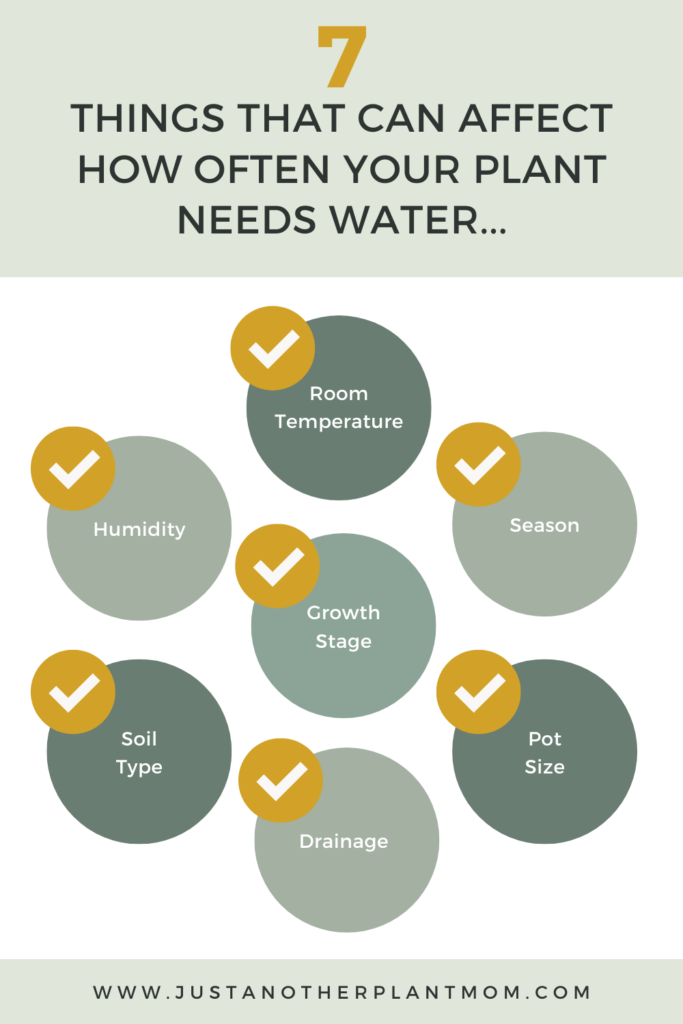
One of the most important things you can do when it comes to watering your plants is to get to know their needs. It’s not always as simple as following a species-specific guide. For example, you might get the advice that Spider plants should be watered once a week and Pothos plants should be watered every one to two weeks. Although I wish it was this simple (that would make things a lot clearer) unfortunately it’s not!
While certain plant species have a tendency to have lower water requirements and others have higher water requirements, there isn’t a hard and fast rule about exactly how much and how often to water. This is because many factors can affect the needs of your plant, such as how warm the room is, how humid the room is, the season or growth stage of the plant, the soil type, pot size and drainage…you get the idea!
One plant might have different watering needs throughout the year as the seasons change (water requirements generally go down in the winter), as it grows, or as it’s environment changes. So how can you tell how much water your plant needs?
Signs your plant needs water
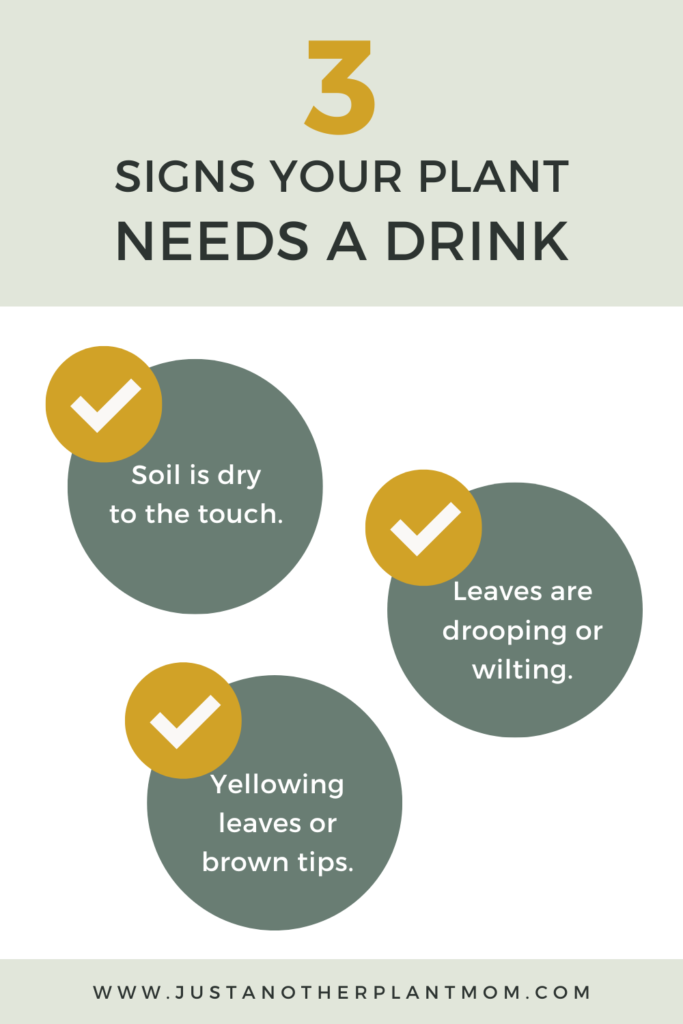
- Soil is dry. Stick your finger (or a chopstick) into the top inch or two of soil. If it feels dry to the touch, it’s probably time to water. You can also tell if the soil is dry by the color (it’s lighter than damp soil) or if there’s any cracks in the soil or if it’s pulling away from the pot. When in doubt, try a soil moisture meter!
- Drooping leaves. Some plants are quite dramatic and will wilt, droop, or even close up slightly when they need water. There are some plants that do this in the evening too, so watch for a day or two to determine if it’s normal behaviour for your plant. My Oxalis plants close up in the evening, but when I see them doing this during the day, it’s generally because they’re thirsty! Other plants might have other cues that it’s time for a water. For example, succulent leaves tend to shrivel up slightly when they’re ready to be watered. If you pay attention, you’ll get to know the signs from your plants!
- Color of leaves. Some succulents start to turn a purple color when they are underwatered. This is actually a desirable thing for those that love the color! Just pay attention to make sure you’re still giving them enough water. In other plants, leaves can lighten or turn yellow when they are over or under-watered. It can sometimes be a bit tricky to tell whether it’s from too much or not enough water, however the texture of the leaf will usually give it away. Yellow plump or squishy leaves usually mean overwatering, especially if there’s browning at the base of the stem. Yellow or brown crispy tips or edges on the leaves are probably from underwatering. (Note: this can also be from lack of humidity or inconsistent watering, among other things.) You’ll need to pay attention to the other signs to see if you’re watering too much or too little.
Creating a watering routine for your plants
There are some experts who are completely opposed to following a watering schedule for many of the reasons I mentioned above: not every plant has the same watering needs and it can depends on many different factors. However, if you’re anything like me, without a regular watering schedule, it’s easy to forget to water your plants altogether.
So let’s compromise and create a watering routine, shall we? What is a watering routine? I like to think of it as a little check-in with my plants. Depending on how many plants you have and where you live (how hot and/or humid your home is) you might do this routine every day or twice a week like I do.
Here’s what my watering routine looks like:
- Grab my watering can.
- Visually check all of my plants. (At this point I can tell fairly easily by looking at them and the soil whether they water, but when you’re first starting or when in doubt, do the finger test!)
- Water any plants that need water.
That’s it! Nothing complicated. I just make a point of actually checking each one during this routine, rather than just automatically giving it water. I also know that some plants like a lot of water, while others (such as my succulents) just prefer a little top up.
I should also mention, there are multiple ways to water your plants. Some experts recommend letting succulents dry out completely and then soaking them when you do water them, for example. I personally don’t do that and mine are happy and healthy, but it’s worth Googling your specific plant species to see if there’s any specific needs that it might have.
The Dos of Watering Your Indoor Plants
Here are a few extra tips that you might want to keep in mind when it comes to watering your plants.
- Do research your plant species. It’s always helpful to have a basic understanding of what each plant generally needs.
- Do experiment and observe. Follow your regular watering routine and observe how often your plants seem to need water and how much makes them happy.
- Do ensure that your plant pots have good drainage. If it’s not possibly to repot just yet then water carefully to avoid root rot.
- Do water the base of the plant at the root. You can also try the soaking method if you prefer. This avoids getting water on the plant leaves because some can be sensitive to water sitting on them.
- Do use room temperature water. I usually fill my watering can right after I finish watering and let it sit out until the next watering so it’s already waiting and ready for me.
- Do pay attention to your environment. If it’s an extra hot day day, check on those plant babies and make sure they’re taken care of!
The Don’ts of Watering Your Indoor Plants
- Don’t overwater. Overwatering is one of the most common mistakes that plant parents make and can lead to root rot and other issues. Remember, it’s better to underwater than overwater!
- Don’t underwater. Ok I know I just said it’s better to underwater than overwater… but obviously you don’t want your plants to be going without either! If you’re new to caring for plants (or have a new type of plant) pay close attention those first few weeks to all of the clues I shared above!
- Don’t automatically water on a schedule. Follow your plants’ needs rather than the calendar. Use the calendar as a reminder to check on your plants instead!
- Don’t ignore the soil. In addition to checking your soil for moisture, make sure that you’re using the right soil for your type of plant and adding soil or repotting when necessary.
- Don’t use hard water. Ok, this isn’t always possible, I get it! We have really hard water here, and I get around it by occasionally using filtered water. (Apparently it’s a myth that letting water sit overnight helps with this.) You could also use a water softener or rainwater if it’s available to you or just repot more frequently if you notice a build up of minerals. If all else fails, just avoid plants that are extra sensitive to hard water. Many will be just fine!
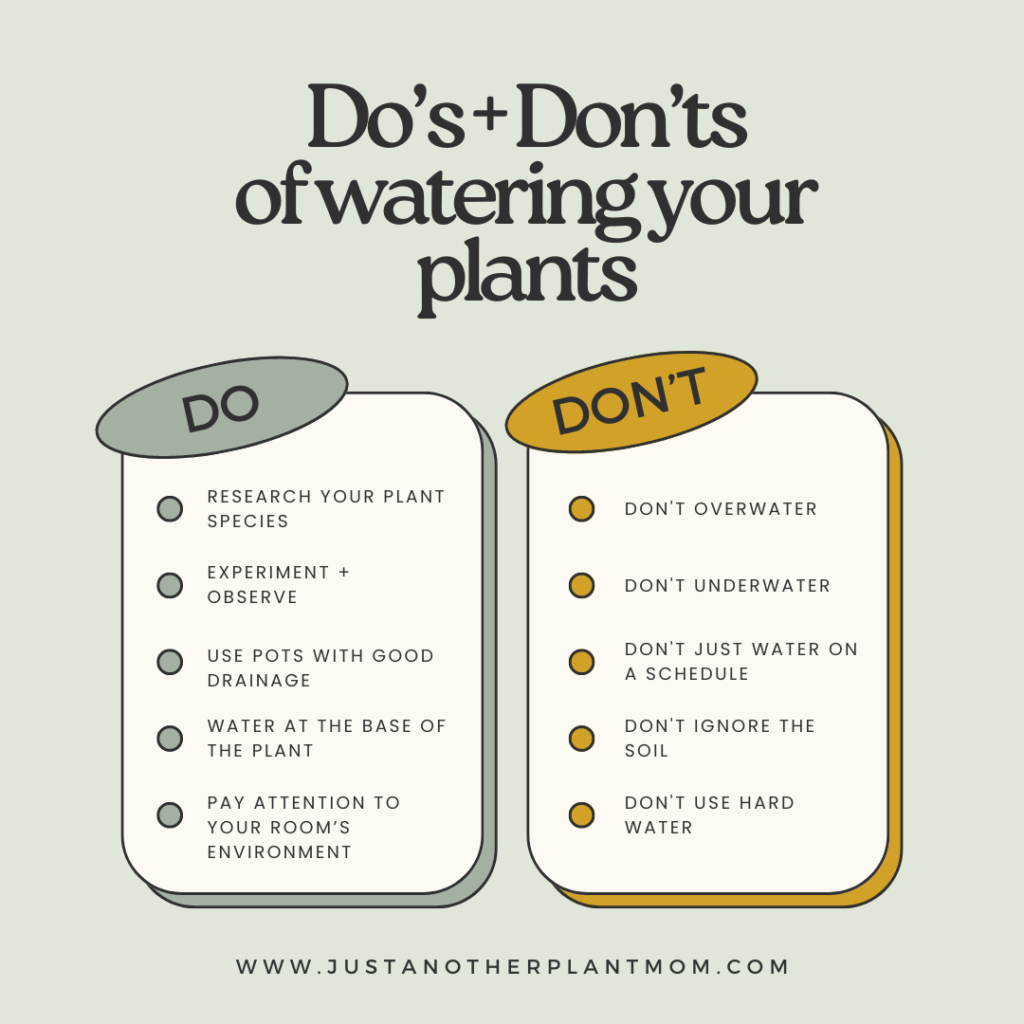
Ok, that’s it! You made it through the ultimate guide to watering your indoor plants! Although it isn’t an exact science, I hope that these tips will help you to feel more confident when it comes to watering your plants. Remember to observe your plants regularly, adjust your watering schedule as needed, and most importantly, take the time to get to know and enjoy your plant babies! 🌱
